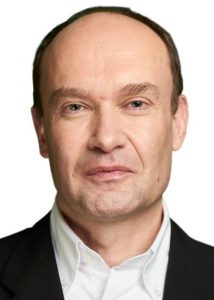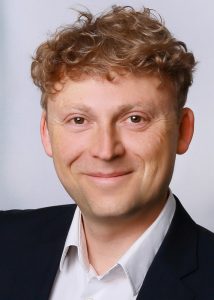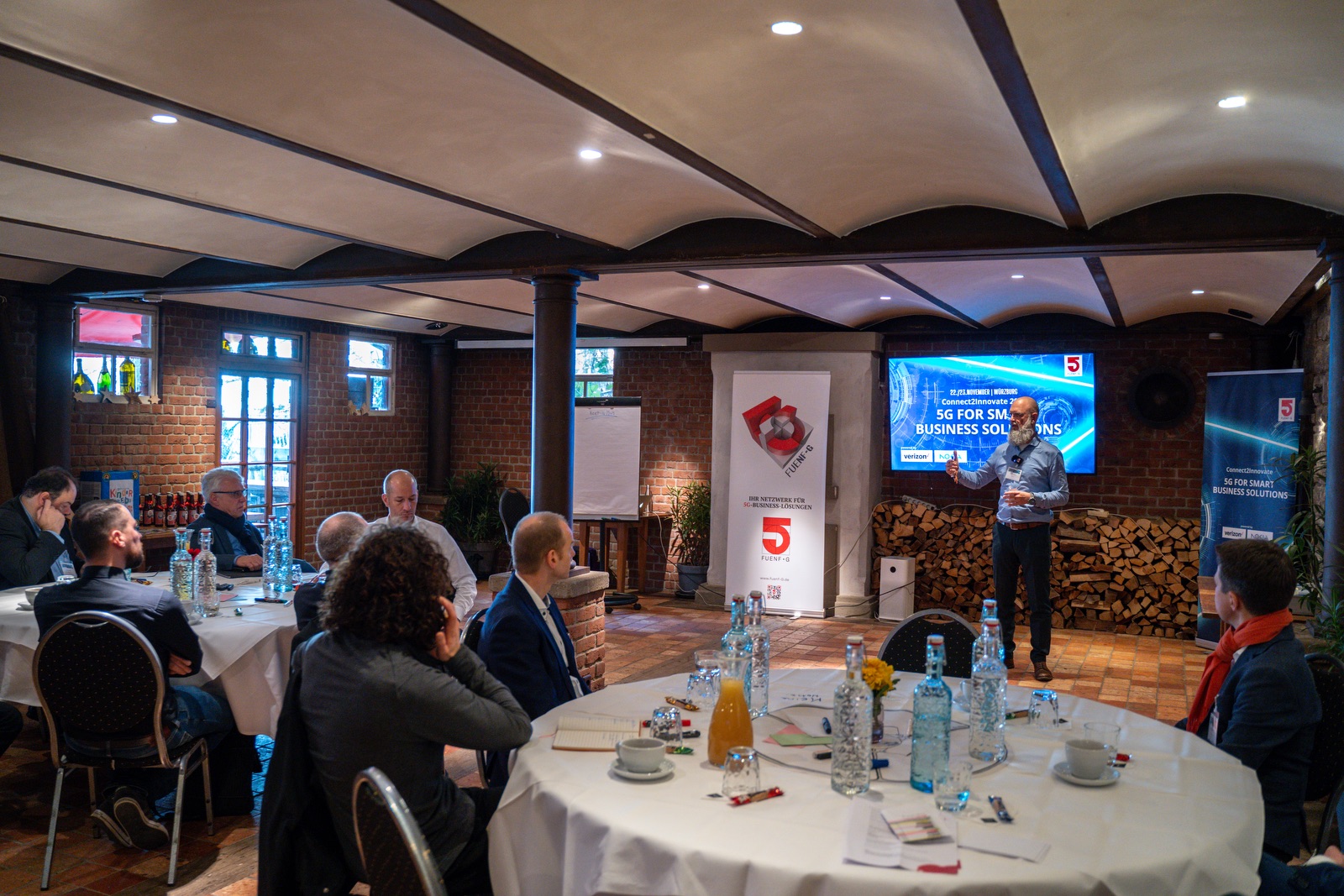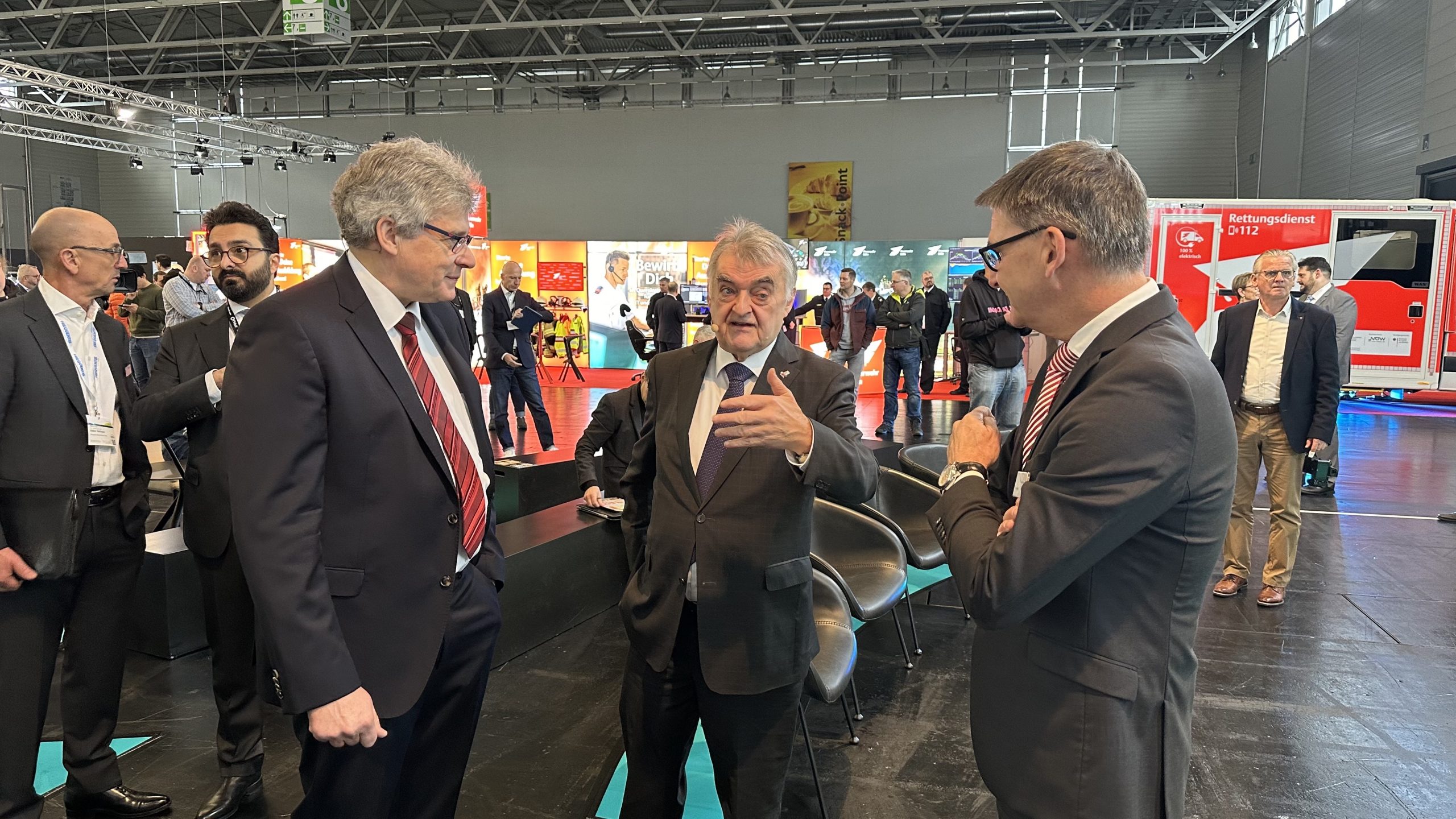6G-ANNA is a leading research project on sixth-generation mobile communications. (Picture: Rohde & Schwarz)
By 2030, researchers and companies hope that 6G will be ready for the market and herald the next stage in wireless communications. After all, the sixth generation of mobile communications is also more than just another transmission standard. Novel architectures and services are being designed to merge both the physical and virtual worlds. The foundation for this is being laid by the German 6G-ANNA research project, amongst others.
A comprehensive project to prepare for the next generation of mobile communications was launched with a catchy name: 6G-ANNA is the title of the research project, short for 6G-Access, Network of Networks, Automation & Simplification. Behind this, is a system architecture based on three pillars: the 6G access network (“Access”), the integration of heterogeneous terminals and subnetworks with the mobile network (“Network of Networks”), and the topics of automation and simplification. Important aspects of selected use-cases such as subnets, extended reality (XR), and digital twins in real-time will also be implemented and presented as feasibility studies.
The three-year collaborative project, which is funded by the German Federal Ministry of Education and Research (BMBF), brings together 29 renowned national partners to advance 6G research and standardization. Participating companies include Vodafone, Ericsson and Nokia, Bosch, Siemens and Airbus, PHYSEC and Rohde & Schwarz, plus several Fraunhofer institutes and quite a few universities. The complete list can be found on the BMBF website. Here we present some of the project partners and their contributions to 6G development.
6G: Technical and societal objectives
With this lighthouse project, the German government aims to support German and European research in the field of 6G, actively shape the development of the technology and – together with other European initiatives – take a leading role in the run-up to the standardization process, ensuring a relevant influence on committee work.
The next generation of mobile data communications should help drive digitization and pave the way for a hyperconnected economy and society. Germany and the EU are therefore striving to ensure that 6G solutions are not only technically powerful but also trustworthy. Further, 6G solutions ought to be sustainable systems that take into account the European Union’s principles of action and values from the ground up. This is particularly directed at China and its growing efforts to integrate surveillance capabilities into the technical specifications of new standards.
Of course, there are also economic goals associated with 6G-ANNA: Building up know-how, locating manufacturing of key components in Germany, and taking into account the requirements of leading German industries should help strengthen Germany’s and the EU’s technical sovereignty. In an interview with Handelsblatt newspaper, the education minister said:
“6G is a huge opportunity for Germany that we must seize. 6G research creates the conditions for innovation and growth.”
Bettina Stark-Watzinger, Federal Minister for Education and Research
Nokia leads the way
The project, which started on July 1, 2022, and has a total volume of 38.4 million euros, is being managed by Nokia. The Finnish mobile communications group carries out extensive research activities in this country. Nokia will work closely with the consortium and cooperate with other projects in the overall 6G funding initiative. These include, for example, four university 6G hubs with more than 60 faculty members. In the international context, 6G-ANNA will be instrumental in supporting the 6G funding initiative to exchange with 6G projects in Europe and beyond, to drive 6G innovation globally, and shape 6G standardization.
“With 6G-ANNA, Nokia is leading the most important government-funded 6G lighthouse project in Germany. Even though the first 6G networks are not expected to be commercially available before 2030, we are already laying the technical foundations with this research project. We are thus ensuring long-term innovations that will drive 6G development nationally and internationally.”
Peter Merz, Head of Nokia Standards
According to Nokia’s assessment, 6G will not only build on existing technologies and systems but will also integrate disruptive innovations into the overall architecture and, thus, also open up new fields of application. The Finns expect nothing less than a reformulated concept of network communication. It is to be enabled by a highly agile and cognitive architecture. This will automatically provide new services that are optimally tailored to these applications, optimize connections using integrated AI, and not only connect to countless sensors – the network itself will become a sensor. Ultimately, future networks will increasingly merge the human, physical and digital worlds, according to the expectations of 6G researchers. Nokia illustrates this vision in six scenarios in its 6G-eBook.
Advance into the terahertz region
Project partner Rohde & Schwarz announced that it will contribute its already extensive research on 6G and related technologies, which the company conducts under the title #Thinksix, to the research project. These include, for example, (sub)THz communication, Joint Communication and Sensing (JCAS), artificial intelligence (AI) and machine learning (ML) or reconfigurable intelligent surfaces (RIS).
In particular, data transmission at frequencies beyond 100 GHz, such as in the D-band (sub-THz range, 110 GHz to 170 GHz) or in the H-band (at 300 GHz or 0.3 THz), poses new challenges for research. Rohde & Schwarz began working with partners years ago to develop, transmit/receive modules, signal generators, 2D and 3D antenna technology, and a suitable signal and spectrum analyzer. For example, over-the-air tests (OTA tests) with bandwidths of 2 GHz are now available for 6G research. Suitable transmit and receive diodes have been developed by the Karlsruhe Institute of Technology (KIT), for example. In the future, they could be used to establish tight inner-city networks, as the article “6G sparks from any lantern” shows.
Fail-safe performance of 99.9999999 percent
Also part of the 6G-ANNA research initiative is the Technical University of Munich (TUM). This is where the 6G Future Lab Bavaria is located. Project manager Prof. Wolfgang Kellerer, is also one of the two spokespersons for the Thinknet 6G platform of Bayern Innovativ, another component of the Bavarian initiative, which aims to network all relevant players.
The central goals of the 6G Future Lab are maximum reliability, shortest latency times, highest energy efficiency, and new processes that offer data security even when using quantum computers. This is intended to lay the foundations for high-tech applications such as teleoperations, for which the aim is to achieve 99.9999999 percent reliability. However, cooperation between humans and robots, for example, in nursing, must also function without problems. In addition to reliability, this also requires an extremely low latency. After all, an incorrect reaction could lead to the robot injuring someone or destroying something within a fraction of a second.
Another research focus is digital twins: Both virtual images of an object or a production plant and of the network itself should make it possible to train the network and optimize it for its tasks, also with the help of artificial intelligence 8KI) and machine learning (ML).
Collaborative “Network of Networks”
Friedrich-Alexander-Universität Erlangen-Nürnberg (FAU) is responsible for the development of a new network concept in the 6G-ANNA alliance: Context-aware Collaborative 6G IIoT Networking for Autonomous Systems. Three aspects are particularly important here:
- First, instead of a central network, there are many independent subnetworks, which is also known as a “network of networks”.
- One enormous advantage here is independence from a central office. However, independent does not mean isolation; instead, there is more potential for mutual support and growth. The individual networks live from working and exchanging with each other and contribute to mutual further development and optimization.
- In addition, they are adaptable in relation to their environment.
In addition to industrial manufacturing, smart city applications are considered a perfect application area for such collaborative 6G networks, where without reliable networking there is a risk of major damage in the event of supply failures. Autonomously controlling drones, for example for transport tasks within the city, processes such as collision-free and safe, autonomous driving or the collaborative processing of goods will benefit from the properties of these networks, Prof. Dr. Norman Franchi is convinced. The holder of the Chair of Electrical Smart City Systems and his team represent FAU in the 6G-ANNA project.
“In case of 6G, smart cities will be a perfect application area. According to forecasts, two-thirds of the population will live in cities by 2050. Stable connectivity of infrastructure, public facilities, businesses and people will be even more important than it is today.”
Prof. Dr. Norman Franchi, FAU
Fuenf-G.de spoke with Prof. Franchi in April about the further development of 5G, the potential of 6G for smart cities, and the importance of ecosystems in digitization. Watch the video here as part of our “5 Questions for …” series of talks.
In addition to the industry project 6G-ANNA, FAU is also represented in the Open6GHub. Here, the focus is on pure basic research for sustainable, energy-saving, and secure networks. In addition, FAU is also part of the BMBF-funded “6G Platform – The Platform for Future Communication Technologies and 6G” via Norman Franchi’s contribution. This initiative promotes the preparation of scientific contributions and provides scientific and organizational support for the implementation of the German or European 6G program.
Digital and technical sovereignty with 6G
Apparently, lessons have been learned from past mistakes. For, Germany played virtually no role in the development of 5G, and despite the strong European players Ericsson and Nokia, Chinese providers also initially played a strong role in the construction of 5G networks in the EU. This changed only when policymakers began to have doubts about whether a central infrastructure of the economy could be entrusted to companies that might be subject to the influence of a state that is not only increasingly totalitarian internally, but also at least authoritarian externally.
For a long time, Europe failed to recognize how China strategically expanded its position to influence technological developments. An unusually high proportion of leadership positions in standardization bodies and ever new attempts by Chinese companies to insert surveillance or data collection capabilities into standards show that technical development is not free of political influence.
The interruptions of supply chains, be it through corona lockdowns, technical problems in large production facilities, or various problems in the logistics industry, have shown business and politics the downsides of the massive shift of production to Asia. Masks and medicines, but also computer chips and batteries are just some of the products for which we are largely dependent on non-European suppliers.
Politicians have finally reacted and declared the development of the future communications infrastructure to be a European task. 6G-ANNA is a key project in this regard, but by no means the only one, as evidenced by the 6GKom initiative and other research projects, for example. Developer expertise, influence on standardization, and regional manufacturing will help Germany and Europe regain sovereignty – both in the further development of the technology and in its use for the expansion of digitization.














Leave A Comment